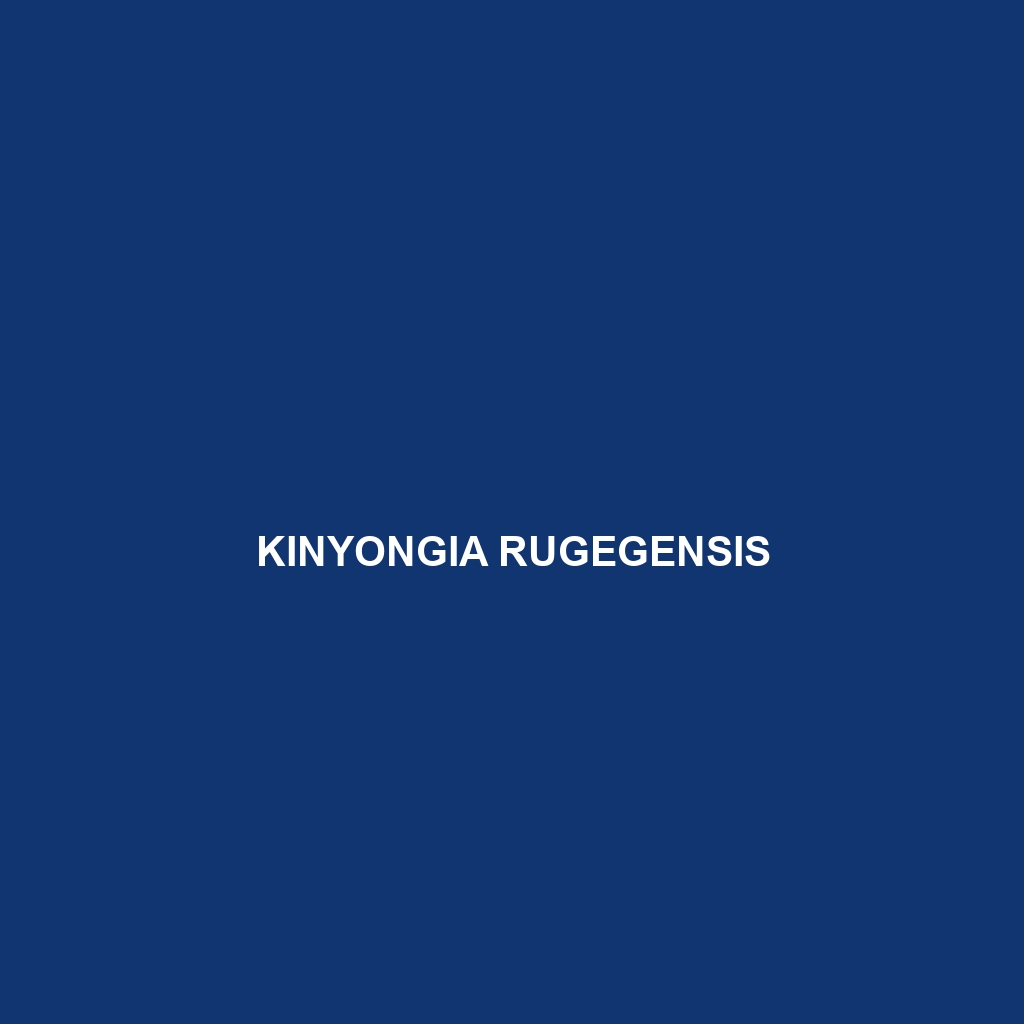Common Name
Kinyongia rugegensis
Scientific Name
Kinyongia rugegensis
Habitat
Kinyongia rugegensis, also known as the Rugege chameleon, is primarily found in the lush, montane rainforests of the Eastern Arc Mountains in Tanzania. These chameleons thrive in environments characterized by high humidity and moderate temperatures, which are typical of tropical rainforests. They are specifically associated with the dappled shade of dense foliage and the rich ecosystem supported by their habitat. The climate in these regions is generally warm with significant annual rainfall, promoting a diverse array of flora and fauna. These habitats are essential as they provide shelter and abundant food resources for Kinyongia rugegensis.
Physical Characteristics
Kinyongia rugegensis are distinguished by their vibrant coloration and unique physical traits. They typically measure between 20 to 30 centimeters in length, making them a moderate-sized species within the chameleon family. Their bodies exhibit a remarkable range of colors, with hues of green, yellow, and occasionally blue, enabling them to blend seamlessly into their surroundings. One notable feature is their prehensile tail, which aids in gripping branches, and their elongated, laterally flattened bodies are adapted for life among the trees. Moreover, these chameleons possess a sophisticated eye structure that allows them to look in different directions simultaneously, an evolutionary advantage for spotting predators and prey.
Behavior
In terms of behavior, Kinyongia rugegensis is primarily arboreal and exhibits a territorial disposition, with males often engaging in displays of dominance to woo females during breeding seasons. They are not migratory and instead maintain a specific home range within their forest habitat. These chameleons are primarily diurnal, using their color-changing abilities not only for camouflage but also for communication and thermoregulation. Males will display brighter colors during courtship rituals to attract females, showcasing their health and genetic fitness. Additionally, when threatened, they can enhance their coloration as a warning signal to potential predators.
Diet
Kinyongia rugegensis is predominantly insectivorous, feeding on a variety of insects such as crickets, locusts, and small beetles. This insect diet is crucial as it provides the necessary proteins and nutrients essential for their growth and reproduction. Their tongue, which can extend rapidly, enables them to capture unsuspecting prey from a distance, showcasing their adept hunting skills. During the warmer months, they may also consume small fruits and leaves, though they are primarily reliant on insects for sustenance, classifying them as a carnivorous species.
Reproduction
The reproductive cycle of Kinyongia rugegensis is fascinating and well-adapted to their montane habitat. Mating typically occurs during the rainy season, which offers more favorable conditions for the survival of young. Males will display bright colors and perform elaborate courtship displays to attract females. After mating, the female lays clutches of 10 to 30 eggs in a secluded area in the soil or leaf litter. The gestation period lasts approximately 4 to 6 weeks, with hatchlings emerging as miniature versions of adults. Parental care is minimal; once the eggs are laid, the female does not guard them, making the young vulnerable to various predators.
Conservation Status
As of now, Kinyongia rugegensis is listed as vulnerable due to habitat loss primarily caused by deforestation, agriculture, and climate change. The destruction of their rainforest habitats threatens their population and genetic diversity. Conservation efforts are underway to protect their natural environments, including habitat restoration projects and the establishment of protected areas. Continuous monitoring and research are vital for the survival of this species, given that their populations are susceptible to environmental changes and human encroachment.
Interesting Facts
One intriguing fact about Kinyongia rugegensis is their ability to change colors not only for camouflage but also as a response to their emotional state, similar to many other chameleon species. This means that they can exhibit mood changes, such as excitement or stress, through their skin color. Furthermore, they have been observed exhibiting unique “wave” displays with their bodies that may serve as communication signals with other chameleons.
Role in Ecosystem
Kinyongia rugegensis plays an essential role in its ecosystem as both a predator and prey. Their hunting of insects helps regulate insect populations, maintaining ecological balance. As a source of food for larger predators, they contribute to the food web within their montane forest habitat. Additionally, their presence indicates the overall health of their rainforest ecosystem, as their survival is closely tied to environmental conditions. Their role as predators and their interactions with other species underscore the importance of biodiversity and ecosystem health.
